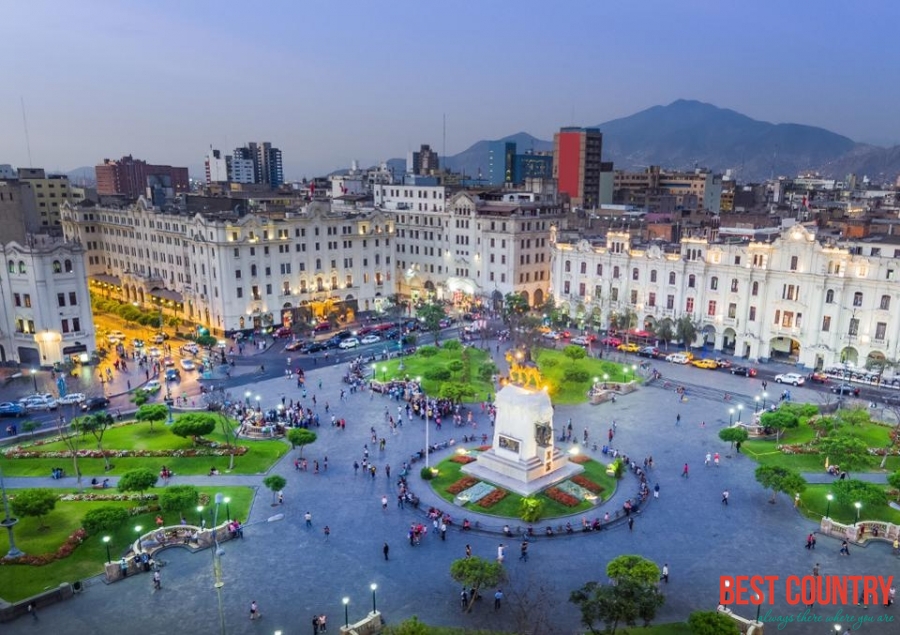Lima is the capital of Peru

Lima's architecture is characterized by a mix in styles as reflected from shifts between trends throughout various time periods of the city's history. Examples of early colonial architecture include such structures as the Monastery of San Francisco, the Cathedral of Lima and the Torre Tagle Palace. These constructions are generally influenced by the Spanish baroque, Spanish Neoclassicism, and Spanish Colonial styles. After independence, a gradual shift towards the neoclassical and Art Nouveau styles took place. Many of these constructions were greatly influenced by French architectural styles. Many government buildings as well as major cultural institutions were contracted in this architectural time period. During 1960s, constructions utilizing the brutalist style began appearing in Lima due to the military government of Juan Velasco. Examples of this architecture include the
Museum of the Nation and the Ministry of Defense. The 21st century has seen the appearance of glass skyscrapers, particularly around the city's financial district. Also there are several new architectural and real estate projects.
The largest parks of Lima are located near the downtown area such as the Park of the Reserve, Park of the Exposition, Campo de Marte, and the University Park. The Park of the Reserve is home to the largest fountain complex in the world known as the Magical Circuit of Water.
Lima is home to the highest concentration of museums of the country, the most notable of which are the Museo Nacional de Arqueología Antropología e Historia del Perú, Museum of Art of Lima, the Museum of Natural History, the Museum of the Nation, The Sala Museo Oro del Perú Larcomar, the Museum of Italian Art, and the Museum of Gold, and the Larco Museum. These museums mostly focus on art, pre-Columbian cultures, natural history, science and religion. There's a particularity with the Museum of Italian Art, which is the only museum that shows European art in Peru.